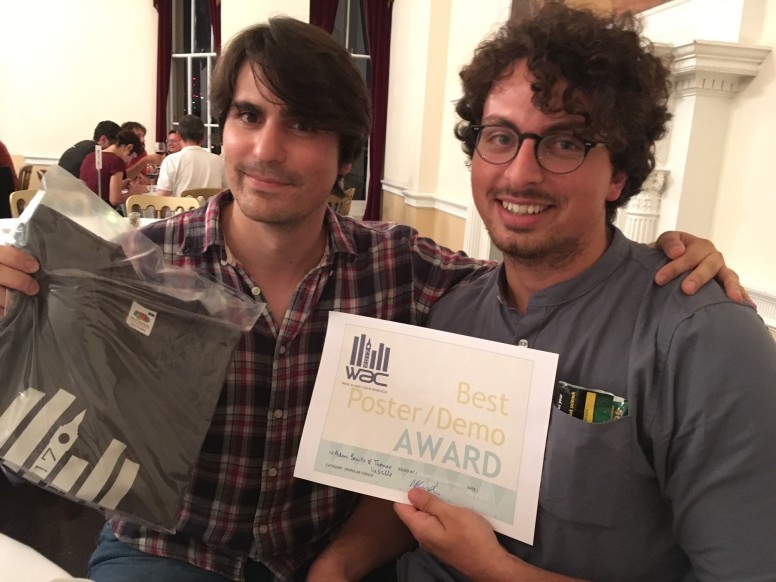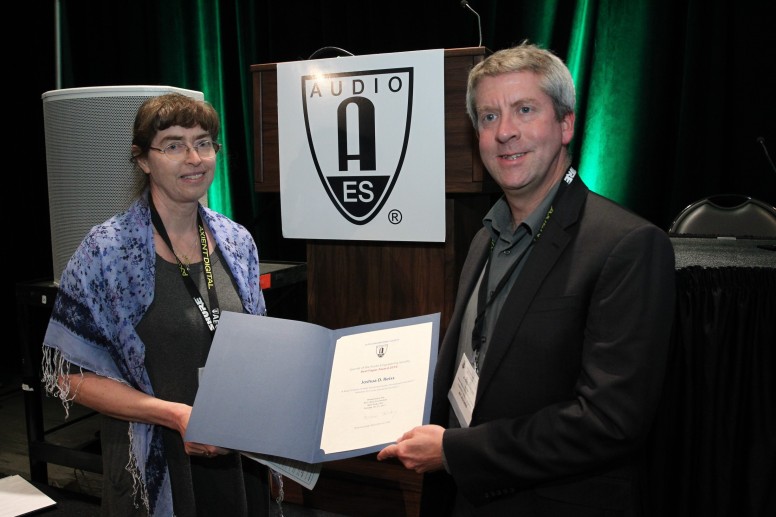Last week featured the first part of our ‘Audio research year in review.’ It focused on our own achievements. This week is the second, concluding part, with a few news stories related to the topics of this blog (music production, psychoacoustics, sound synthesis and everything in between) for each month of the year.
Browsing through the list, some interesting things pop up. Several news stories related to speech intelligibility in broadcast TV, which has been a recurring story the last few years. Effects of noise pollution on wildlife is also a theme in this year’s audio research headlines. And quite a few of the psychological studies are telling us what we already know. The fact that musicians (who are trained in a task that involves quick response to stimuli) have faster reaction times than non-musicians (who may not be trained in such a task) is not a surprise. Nor is the fact that if you hear the cork popping from a wine bottle, you may think it tastes better, although that’s a wonderful example of the placebo effect. But studies that end up confirming assumptions are still worth doing.
January
- Whether we speak slowly or quickly, we tend to convey the same amount of information
- Popping balloons can be louder than a shotgun blast
- Baboon can make vowel sounds
- Hairbrush listens for breaking hair
- Lack of music enjoyment linked to brain disconnection
- Musicians have faster reaction times than non-musicians
- Parrot mimics Google beep sounds
February
- Drones used as bio-acoustic recording devices
- Its the actors and directors fault that speech is sometines unintelligible in broadcast TV, at least according to the sound recordist 🙂
- The photoacoustic effect causes the crackling sounds made by meteors
- Study shows need to completely change sound exposure in neonatal intensive care units
- mice hearing improved by gene therapy, and the original article
- An overactive part of the brain that joins senses with emotions may be why eating sounds make people angry
March
- playing music to chimps doesn’t seem to affect them
- A wonderful online vocal simulator goes viral
- hacking phones with sound waves
- Gentle sound stimulation boosts memory and sleep in older adults
- Using auditory masking models to identify when hospital alarms aren’t heard
- lasers reveal the sounds of Big Ben
- Creation of a 2D audio display from a flat panel loudspeaker, with different size, shape, and location of each source
April
- Tattoo artist Nate Saggard creates the first tattoo that you can hear, and ‘Soundwave Tattoos’ is born
- Object-based audio can improve broadcast TV for the hearing-impaired
May
- Researchers demonstrate and verify the ‘DFA faders effect’
- How sound source localisation is encoded by synaptic delays – A big step forward in understanding binaural and temporal auditory processing
- Acoustic harvesting in loudspeakers is possible
- fooling voice recognition systems
- Turning a flag into a loudspeaker
- Human noise reduces bird species richness and diversity in urban parks
- First Doctor Who episode released in immersive binaural sound
- Noise pollution is drowning out nature in protected areas
- NASA records the sounds of Saturn’s rings
- Graphene used to convert heat into sound, which is closely related to a previous blog entry where we talked about graphene-based headphones
- A string-wine glass musical instrument

June
- Tool-assisted rhythmic drumming in palm cockatoos shares key elements of human instrumental music
- A music playing robot
- Sounds designed to be inaudible yet picked up by microphones operating in the audible range
- Paris’s Notre Dame Cathedral has an immersive virtual orchestra always playing thanks to advanced acoustic rendering
- New sound diffuser is ten times thinner than standard designs (only a little bit thinner than the state of the art though, but still good news)
July
- People can identify emotions in the voices of other animals, perhaps there is a universal code for vocal expression and emotion perception
- multimicrophone systems used to localise gunshots and catch rhinoceros poachers
- Researchers incidentally find that the buzz of drones is more annoying than any other vehicle
- Trending: listening to media content at double speed, but players should allow continual adjustment of playback rates
- music created by thought alone
- no correlation between headphone response and price, similar to our ‘microphone shootout’ study, discussed here.
August
- A patient needed to play the saxophone while doctors removed a tumour near the part of the brain responsible for music function
- At the Audio Mostly conference that we hosted, Researchers demonstrate Media Device Orchestration to bring 3D sound to the living room.
- owl wings could be the answer to noise pollution
September
- Blood testing via sound waves
- https://www.huffingtonpost.com/entry/59ba40c3e4b06b71800c36e4
- Did acoustics affect where prehistoric cave art was painted? and see the blog entry by Trevor Cox about it. A correlation is moderate reverb and low frequency resonance is there, but this is not enough to suggest that acoustics was a factor influencing the choice.
- First ever interactive object-based radio drama
- The ten year anniversary of automatic mixing, also discussed in one of our previous blogs
- Listening to happy music may enhance divergent creativity
- The EU bans excessively loud hoovers / vacuum cleaners
October
- Auditory cues are more accurate than visual cues for identifying emotion
- Ear training and critical listening skills are important to everyone – A major rigorous study shows that playing an audiogame improves speech understanding in a noisy environment
- Object-based audio offers a solution to the speech intelligibility problem with broadcast television
- popping cork sound makes people think the wine tastes better
- Google’s Home Max tries to make the sound adapt to the environment (and they aren’t the only ones doing that)
- Audio engineering researchers have a bit of fun finding out which cough drop wrappers are most irritating to others when unwrapped during a classical music concert, which we discussed when it first appeared.
- Origami sonic barriers could greatly reduce road noise, but they’ll be competing with a lot of new materials and designs for acoustic damping, like sonic crystals which led to the start-up Sonobex
- We still have a way to go before ideal sound reproduction – listeners can discriminate between all the well-known 3D audio formats
- Are the legendary acoustics of Greek ampitheatres a myth?
November
- Birdsong and human speech may share biological roots
- The importance of acoustics and sound design in architecture – Open plan office designed for collaboration is too noisy to concentrate
- The brain processes sound in oscillating, flickering waves
December
- Turning right ear to sound helps you hear better
- Why click speech is rare
- talking to yourself is fundamentally the same as speaking your thoughts out loud
- We can identify someone by how they breathe between words
- Computational study of world music reveals which countries have the most distinctive music
 Rod Selfridge (right) , Dave Moffat and I, for best paper at Sound and Music Computing
Rod Selfridge (right) , Dave Moffat and I, for best paper at Sound and Music Computing
